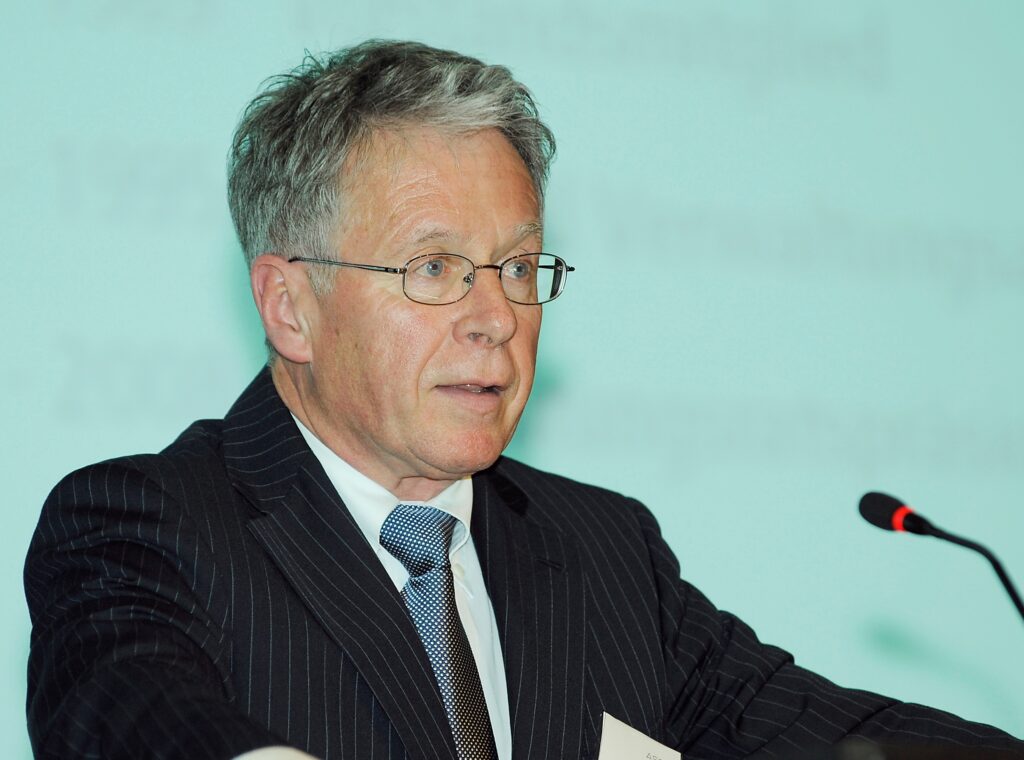Niklaus Sutter
1975 CEO, Chairman 1995–2008
How did you come to be at Asga?
It’s always been “my” Asga, as it were. My father was one of the founders, and in 1975 I joined the management board as his successor. Right from the start, I experienced Asga’s development very close up.
So, what makes Asga different from the others?
Asga’s real pioneering era was between 1962 and 1985. After the three-pillar principle became established there was a slightly odd structure within occupational pension provision: There were independent pension funds within large companies and in the public administration; then there were institutions for the various professions, the trade unions also had occupational benefits institutions, plus the occupational benefits institutions set up by the life insurers. When it entered the market as a co-operative pension fund, Asga brought with it a truly new approach as a pioneer in voluntary, collective and co-operative occupational pension provision for businesses. The fact that we were genuinely independent of banks and insurance companies was also important to our development. Thanks to our co-operative structure, the surpluses we generated were used entirely for the benefit of insureds.

That's the co-operative spirit! It wasn't some anonymous legal entity providing retirement benefits, it was a personal relationship with an opportunity for direct involvement.
Why the strong ties with businesses?
Trade associations were among our group of founders, and therefore held positions on Asga’s management board. The plan was to have a large management board that would geographically reflect business circles in Eastern Switzerland as well as ensure personal representation. Business representatives were involved and asked to come on board – which was very important for Asga’s development and growth. However, the switch from having a large management board to a board of directors was enormously important for strategic management and future development – and the equal representation of employers and employees was another good thing. A board of this size develops other competencies, with directors able to provide input and participate. Tasks can be allocated, committees established, and directors involved in the tasks. This marked an important step in our professionalisation.
So does this co-operative concept still work today?
We were always aware of the need for proximity to our customers, to know our customers – and above all of the need for the customer to know us. The co-operative structure was instrumental in that regard. The fact is that initially we didn’t have a Delegates’ Assembly – instead we had an open Members’ Assembly, meaning each affiliated company, and any of their employees who wanted to, were able to participate and vote. Whether it was 100 employees or two – everyone had the same voting rights and opportunity to express their views. That’s the co-operative spirit! It wasn’t some anonymous legal entity providing retirement benefits, it was a very personal relationship with an opportunity for direct involvement. We’ve always underscored this concept. With over 130,000 insureds, it’s obviously no longer quite as feasible these days. Yet even today the system works in a similar way – the only difference is that the interests of the employees and employers are represented by their delegates.
Impressive growth!
The challenges posed by growth were solved on an ongoing basis through a series of adjustments – in the same way as people need bigger clothing sizes as they grow up. It’s a highly pragmatic approach. Nowadays people would come up with an organisational development strategy – but we preferred to do it in a more “freehand” way.